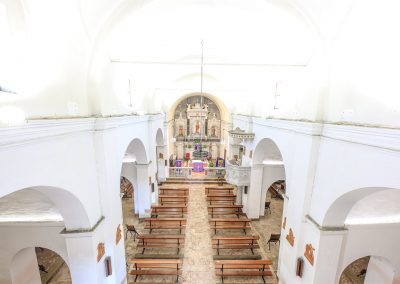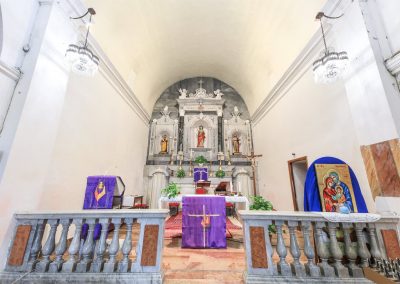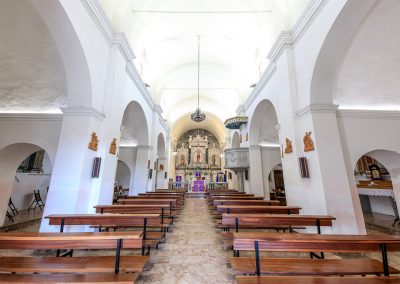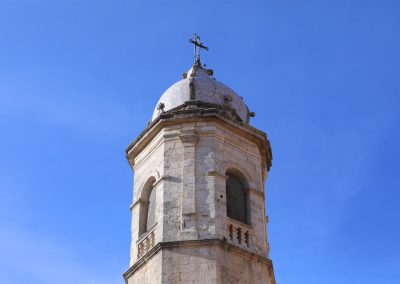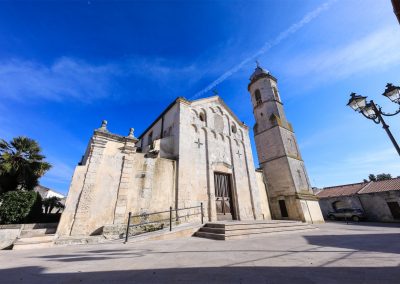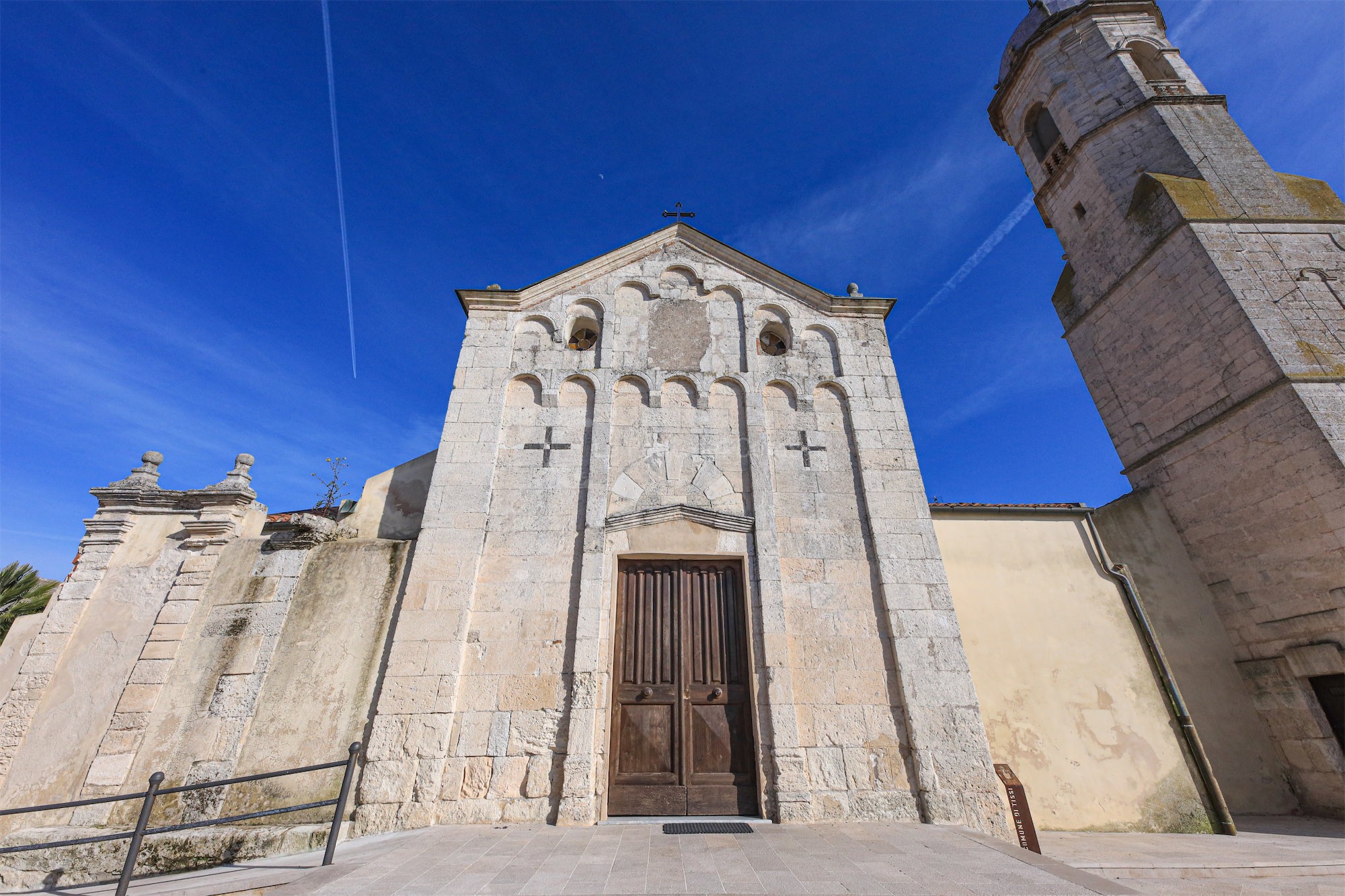
Tissi
Church of Saint Anastasia
The Church of Saint Anastasia is a Romanesque building that has been dated to the second quarter of the 12th century and is located on the main road approaching the urban centre of Tissi, in the northern area. In the 17th century building was renovated and its plan completely changed, creating three chapels per side, enclosed in thick external buttresses. In order to make these changes, the lateral Romanesque walls were knocked down and pillars were added to support the ribs of the barrel vault (tn* rib: an arch of masonry which forms part of the framework on which a vault rests. Ribs generally project from the undersurface of the vault). The apse is located behind the backside of the altar and has an open shell frame in the dome. Originally the plan of the building was longitudinal and had only one nave; its apse facing south-east. Today, the Romanesque elements are visible only on the outside, where the original limestone walls remain. The façade is characterised by wide corner pilasters that weld together with the inclined socle and arches of the sloping roof. (tn* socle: a plain low block or plinth serving as a support for a column, urn, statue, etc. or as the foundation of a wall). It is divided into two sections by horizontal arches which are in turn divided into three parts by half pilasters: the upper half pilasters are aligned with the lower ones, but thinner, and end at the base of the impost block of the arches. On the lateral mirrors, inside a circle limestone inlay, there is a cross of dark trachyte. The main entrance with architrave is surmounted by a round arch and, in the 17th century, inclined moulded frames were inserted inside the semicircular lunette that outline a pediment. The opening of the oculus in the upper lateral mirrors dates back to the same period. Along the sides, at the height of the horizontal arcade, there is a series of fluted, rounded or torus moulded arches (tn* torus moulding: convex, semi-circular moulding). The wall, only visible in the upper part as a result of successive interventions, is segmented by thin and flat half pilasters and framed by thick corner pilasters.
Source: “Tissi, the territory from prehistory to the Middle Ages” (in Italian), by Pina Maria Derudas

